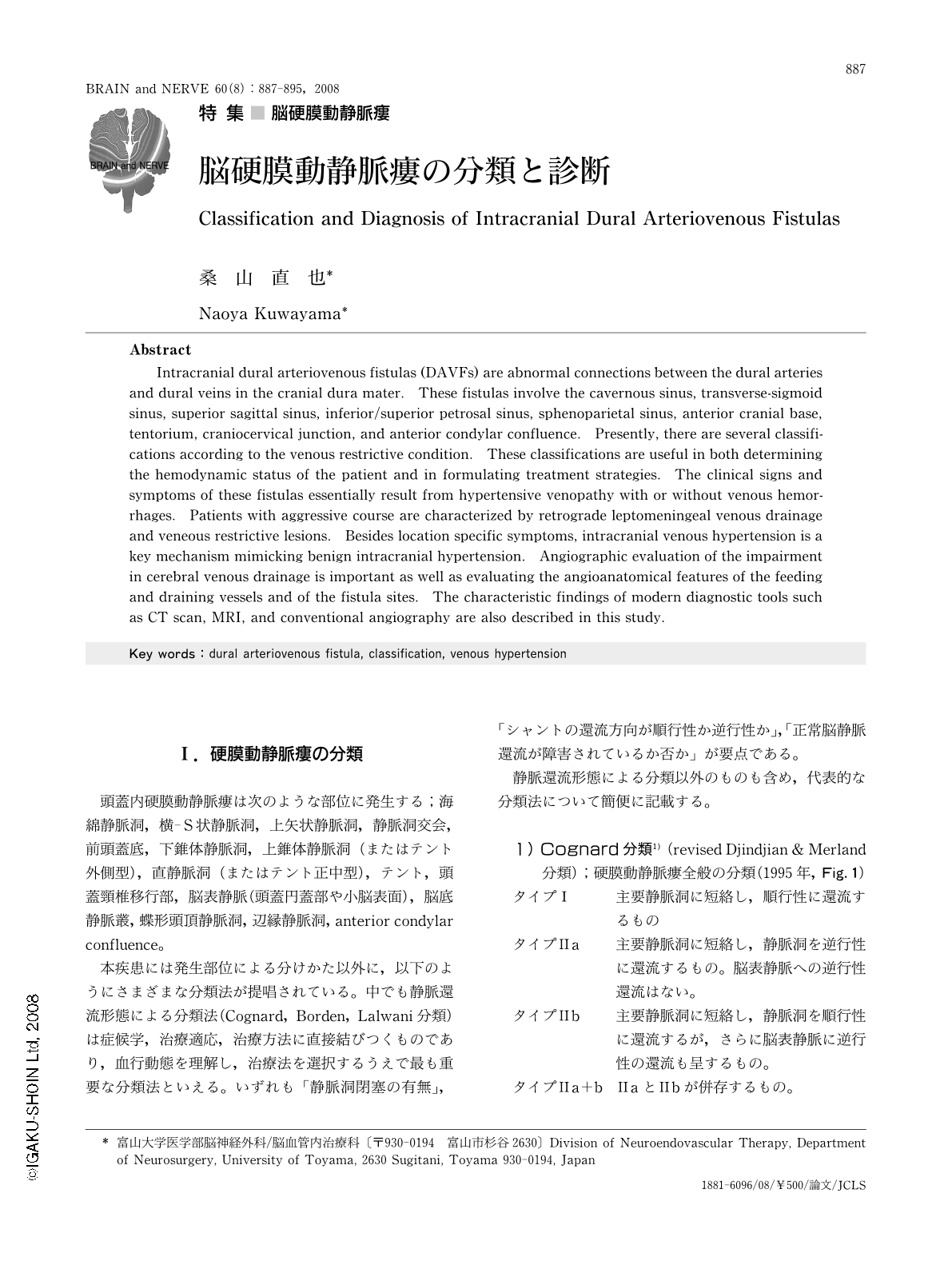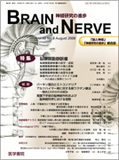Japanese
English
- 有料閲覧
- Abstract 文献概要
- 1ページ目 Look Inside
- 参考文献 Reference
Ⅰ.硬膜動静脈瘻の分類
頭蓋内硬膜動静脈瘻は次のような部位に発生する;海綿静脈洞,横-S状静脈洞,上矢状静脈洞,静脈洞交会,前頭蓋底,下錐体静脈洞,上錐体静脈洞(またはテント外側型),直静脈洞(またはテント正中型),テント,頭蓋頸椎移行部,脳表静脈(頭蓋円蓋部や小脳表面),脳底静脈叢,蝶形頭頂静脈洞,辺縁静脈洞,anterior condylar confluence。
本疾患には発生部位による分けかた以外に,以下のようにさまざまな分類法が提唱されている。中でも静脈還流形態による分類法(Cognard,Borden,Lalwani分類)は症候学,治療適応,治療方法に直接結びつくものであり,血行動態を理解し,治療法を選択するうえで最も重要な分類法といえる。いずれも「静脈洞閉塞の有無」,「シャントの還流方向が順行性か逆行性か」,「正常脳静脈還流が障害されているか否か」が要点である。
Abstract
Intracranial dural arteriovenous fistulas (DAVFs) are abnormal connections between the dural arteries and dural veins in the cranial dura mater. These fistulas involve the cavernous sinus, transverse-sigmoid sinus, superior sagittal sinus, inferior/superior petrosal sinus, sphenoparietal sinus, anterior cranial base, tentorium, craniocervical junction, and anterior condylar confluence. Presently, there are several classifications according to the venous restrictive condition. These classifications are useful in both determining the hemodynamic status of the patient and in formulating treatment strategies. The clinical signs and symptoms of these fistulas essentially result from hypertensive venopathy with or without venous hemorrhages. Patients with aggressive course are characterized by retrograde leptomeningeal venous drainage and veneous restrictive lesions. Besides location specific symptoms, intracranial venous hypertension is a key mechanism mimicking benign intracranial hypertension. Angiographic evaluation of the impairment in cerebral venous drainage is important as well as evaluating the angioanatomical features of the feeding and draining vessels and of the fistula sites. The characteristic findings of modern diagnostic tools such as CT scan, MRI, and conventional angiography are also described in this study.

Copyright © 2008, Igaku-Shoin Ltd. All rights reserved.


